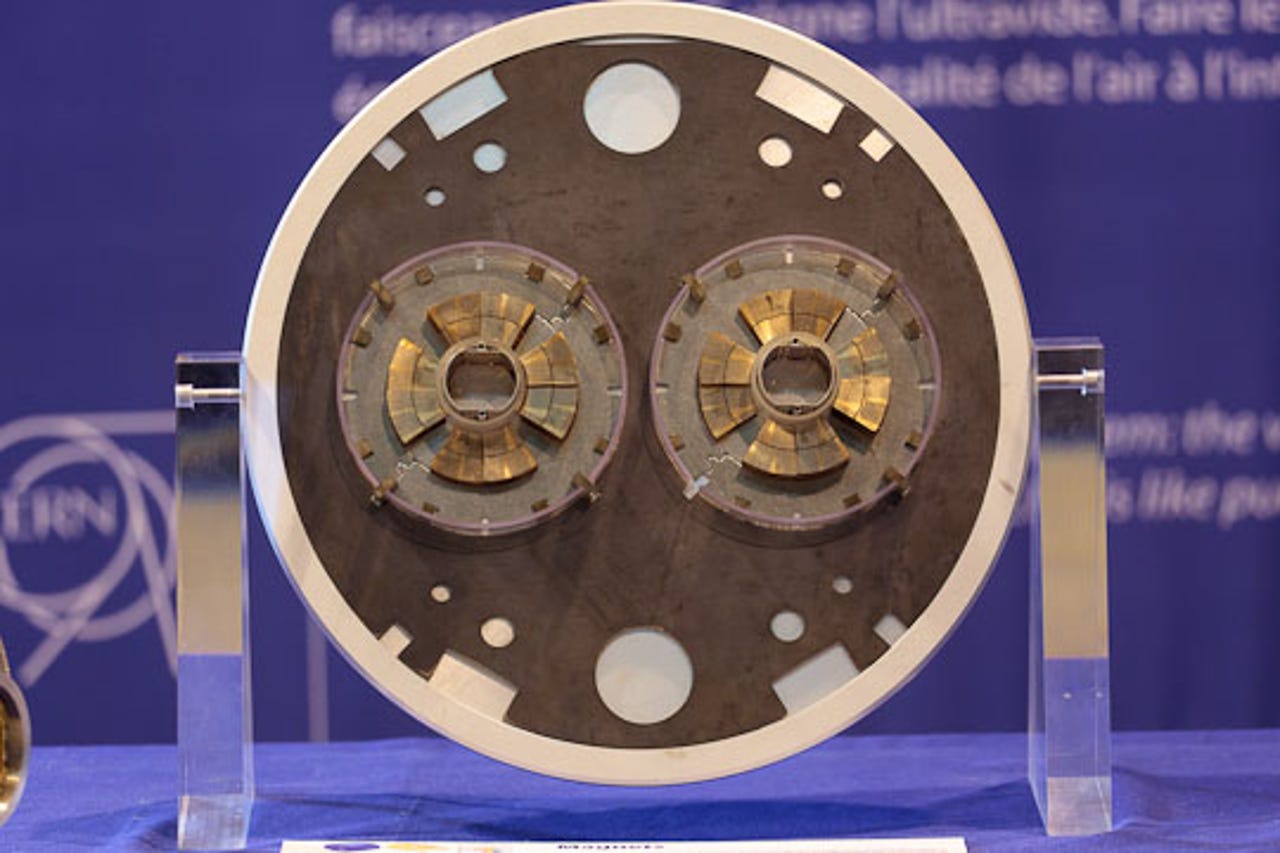Large Hadron Collider tech: photos


At the heart of the LHC are 1232 dipole magnets, of which this is a cross section. The dipole magnet creates a nearly linear magnetic field that steers the beam of ionised particles around the accelerator. Two beams travel separately in opposite directions through the left and right central channels.
The Compact Muon Solenoid (CMS) experiment is one of two geared for a variety of tasks, including finding the elusive Higgs boson. Because the LHC is underground, equipment such as this massive end cap for the CMS experiment must be lowered with cranes. This cap was at one end of the cylindrical detector.
One end of the CMS detector during the LHC's assembly in 2007.
The LHC's primary control centre is used to monitor and run the particle accelerator. This pod of screens is matched by four others for other tasks. Separate control centres are used for the experiments. The green screens toward the left signal that all is well with hundreds of subsystems.
The LHC requires tremendous computing power to store data. A primary copy of the data is stored at CERN, but it's replicated elsewhere across the planet.
A view inside the ATLAS (A Toroidal LHC ApparatuS) detector. Physicists hope to use the detector to find and detail the Higgs boson, a particle believed to imbue more conventional matter with mass.
ATLAS is one of the LHC's two general-purpose experiments. Here, the yellow crane holds the particle beam pipe that's being inserted into the detector.
ALICE (A Large Ion Collider Experiment), one of the LHC's four major experiments, is designed to probe the high-energy past just after the Big Bang when quarks weren't confined within protons and neutrons as they are today.
Albert de Roeck, one of the CMS managers, calls up the latest experimental data from the Compact Muon Solenoid.
Here, a silicon tracking detector — a cousin to an ordinary digital camera sensor — is inserted into one of the LHC's two general-purpose experiments, the CMS.
CERN is where Tim Berners-Lee created the World Wide Web. This is the hand-written note on the side of the first web server alerting staff not to switch it off.
Mirko Pojer, a physicist and the engineer in charge of LHC operations, explains properties of the LHC's two counter-circulating proton beams.
In a September 2008 incident at the LHC, electrical current resistance heated this area until liquid helium burst into a gas, damaging the LHC and forcing a delay in operation and an amended design.
This shot shows the exposed innards of a junction between two superconducting magnet sections at the LHC. The electrical bus connection toward the upper right failed in September 2008, overheating and causing a serious operational incident.
It's customary to celebrate milestones at CERN. Here are some of the leftover bottles.
The exterior of the Atlas control centre at CERN is spruced up with physics-appropriate artwork.
The Globe of Science and Innovation has no scientific function, but the centre is a distinctive CERN landmark.
This magnet assembly, above ground and not in use, shows how the LHC fits within its underground cavern.
The LHC, which fits into the underground tunnel used by an earlier accelerator at CERN, is 27 kilometres in circumference. For scale, the Geneva airport is at the far end of the circle in this shot and the Alps are in the distance.
A 2007 photo shows a worker making the final connections in the LHC ring. Some of the work will be redone after a planned shut-down before the accelerator is run at full power.
Via CNET